Amateur Cinema Between the Wars in Japan
by Noriko Morisue
Amateur Cinema developed rapidly in Japan during the 1920s and 30s. Merchants introduced the 9.5mm and 16mm formats, with the former quickly becoming popular among amateurs. By the late 1920s, networks of amateur movie clubs had been established across Japan as well as in its colonies of Manchuria, Taiwan, and Korea. Amateurs in Japan displayed interest in abstract, experimental, and animated filmmaking as well as in narrative fiction films. Over the course of the 1930s, amateur activities were increasingly inflected by nationalism and state control over film production.
This page provides an introduction to amateur film culture in Japan. The timeline below sketches out some key events and contexts during this period; you can also explore a map of amateur movie clubs that were established in Japan during the 1920s and 30s; finally, a list of noteworthy films provides a starting point for understanding the range of different types of amateur films that were produced in Japan.
To read more about how amateur film was conceptualized in the Japan (and elsewhere), visit the Dossier section of this site.
Amateur Movie Clubs
Click on the points below to find out more about each movie club. Some of the national organizations had many local chapters, which are not all displayed here. For example, the Zen Nippon Patē Shine Kyōkai (All-Nippon Pathé Cine Association) had a total of 137 local amateur cine clubs. This number consisted of 63 local cine clubs under the Kanto branch, 55 under the Kansai branch, 7 under the Hokkai branch, and 12 under the Manchurian branch.
Significant Films
The selected films provide an introduction to amateur filmmaking in Japan during the 1920s and 30s. Follow the links for more information and to view the films (where available).
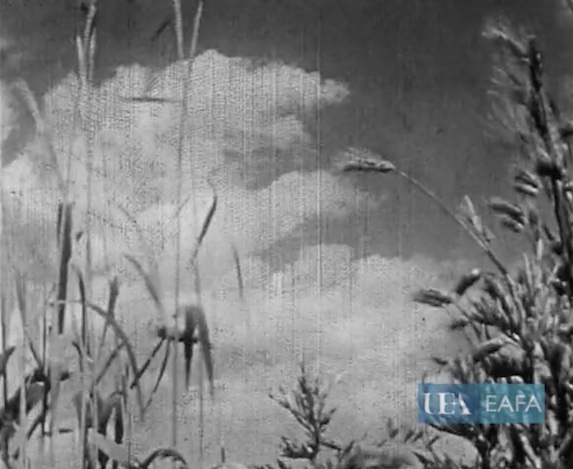
Early Summer (Okamoto Tatsuichi, 1932)
Poetic documentary of daily life in rural Japan. It shows women working in paddy fields, hanging out washing, and feeding chickens. These daily rituals are set against impressionistic shots of the landscape. The film won a prize for its cinematography in American Cinematographer’s 1932 amateur movie contest and subsequently toured the USA and UK as part of the program of award-winning films.
For more information. Watch the film.
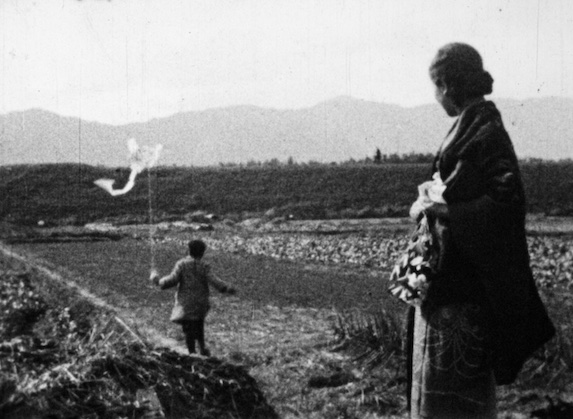
Sister (Takeuchi Kichinosuke, 1932)
This fiction film shows an episode between a young woman and her late brother’s friend. It is a poetic, poignant film with expressive cinematography- - a good example of the superior camerawork claimed for Japanese amateur films by American Cinematographer in the 1930s. Sister was included in the IAC World Tour of Amateur Films which originated in the UK in 1934 and traveled to Europe, Africa, Asia and Australia over the next four years. Takeuchi was an active filmmaker and organizer in Japanese amateur organizations.
For more information. Watch the film.
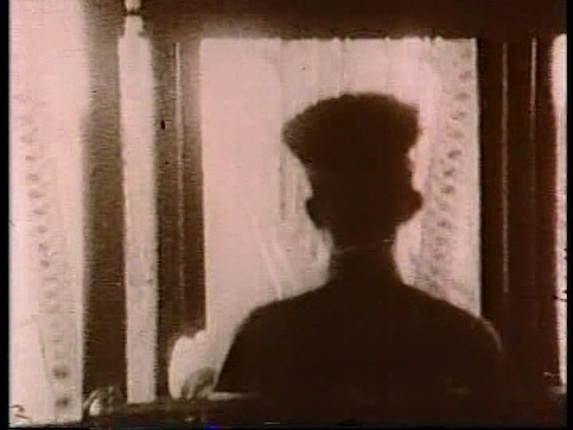
All Lines (Furukawa Ryo, 1932)
The first leftwing filmmaking group to make small gauge films for revolutionary purposes was called Prokino. Prokino was founded in Tokyo in 1929, but it soon established branches in several other Japanese cities. The Prokino group made films which documented and dramatized the struggles of workers and farmers during the period. All Lines shows several strikes organized by bus and trolley workers between 1929 and 1932.
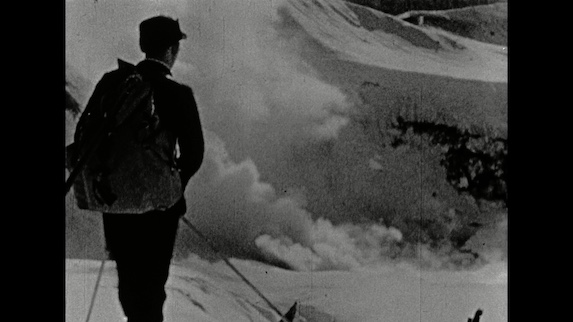
Mount Zao (Tsukamoto Kōji, 1935)
“A down mountain ski run, etched against a filtered sky and set in a world of fantastic snow shapes and incredible beauty, is the theme of Mount Zao, which was filmed on the Japanese mountain of that name. Khoji Tsukamoto has mastered the technique of back lighting the dramatic turns, stems and jumps of a down mountain run so that they are framed against luminous clouds of powdered snow…” - award citation from Movie Makers. This film won numerous awards internationally, as did several other films by Tsukamoto during the 1920s and 30s.
For more information. Watch the film.
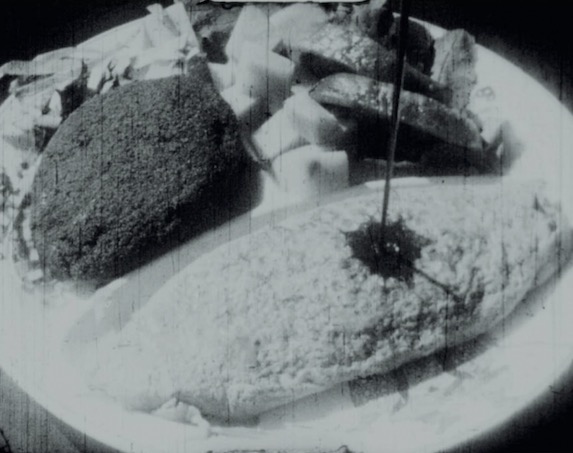
Daidokoro no gikyoku [Kitchen Drama] (Mori Kurenai, 1935)
Mori Kurenai was a significant filmmaker in the Kansai region of Japan during the 1930s, producing many award-winning films and contributing many articles to amateur publications. He made films in a range of different styles, including abstract animations, experimental montage films, and documents of contemporary life. Kitchen Drama is a “vivid, fast-paced, and delicate portrayal of female domestic labour” (Anna Briggs).
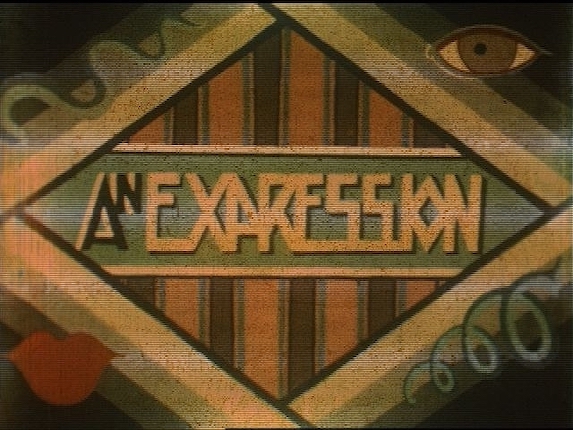
An Expression (Ogino Shigeji, 1935)
An experimental animated film that symbolizes a city man with a triangle and a country woman with a circle to express their encounter through movements. This work was created by using the Kinemacolor technique. To create a multi-color film, the creators shot a black-and-white film, alternating frame by frame between a red filter and a green filter, and developed it. This is one of several amateur animations Ogino made during the period.
For more information. Watch the film.
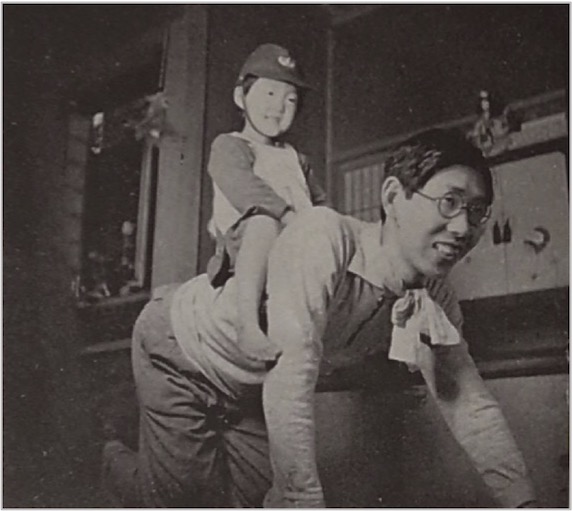
Aiba kōshin [A March of a Favourite Horse] (Mimae Mikiko, 1939)
Mimae was one of the few female filmmakers who was referenced in the pre-1945 Japanese amateur film magazines. For this film, she edited together a sequence of her husband and their small son at home (the boy pretending to be riding his war-horse father), with a scene capturing a crowd of people offering silent prayers, shot on location in Ginza. This topic and narrative structure demonstrate how her film visualized the social and political sentiments in a way to promote the war efforts, even though the film itself also appeared as a family film.
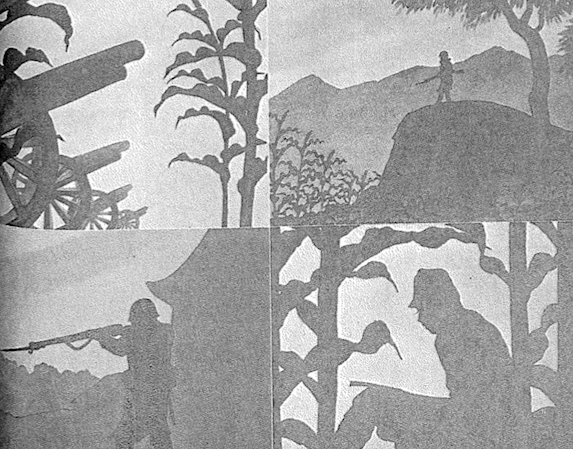
Senjō yori [From a Battlefield] (Takemura Takeji, 1938)
Silhouette animation that narrated a story about a son at the war, who sends a letter to his father waiting for him in his homeland. The narrative unfolds as the father reads through the letter that reveals the son’s life and circumstances in the war zone. Contemporary reviews praised it as a jikyoku eiga (film of the times) that not only “touched the audience’s heart” but also provided a new direction for amateur filmmaking under the wartime emergency.

Gion matsuri [Gion Festival] (Hattori Shigeru, 1941)
A film documenting the annual procession of the Gion Festival in Kyoto on July 17, 1941. Like some Japanese amateurs, Hattori experimented with film equipment and he eventually invented a film splicer that was designed to cut film strips diagonally to create the effect of a wipe. Gion matsuri opens with several consecutive intertitles explaining a brief history of the festival. As he cut from one intertitle to the next, Hattori used the splicer to create the effect of a diagonal wipe, which made it appear as if the viewers were turning a page of a book.